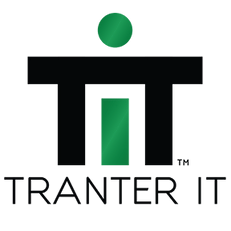When you think of workspaces what comes to mind? You think of a table or desk to place laptops, phones, documents, and chairs to sit on. A place where people perform administrative work for a company.
Traditional workspaces are evolving rapidly toward flexible and smarter workplace models. We’ve all been through the pandemic and had to work remotely, this has evolved the employee experience and companies are still deciding what changes they are going to make to their work models.
This simply means that CEOs, COOs, HR Managers, Facility Managers and other key company managers have to be innovative with change for better productivity. An optimized work environment reduces costs and enables smart work. Organizations moving to a Smart Work Environment can save up to €1,220 (about ₦596,000) per year in real estate costs.
The ultimate goal here is to save cost, improve productivity while attracting and retaining talented workers. Even though rapid changes like Covid-19 and social distancing are making it difficult to optimize space layouts, good data is essential for planning space use. This is where Smart Space Monitoring comes in.
What is Space Monitoring? It is simply a workplace management solution that helps you to understand, prioritize and decide how to increase employee productivity and wellbeing. It is the system of controlling and managing the different physical workspaces a business occupies.
Covid 19 & Space Monitoring
It’s clear that the covid 19 pandemic has created a significant disruption in the business environment. The increase in number of employees working from home, as well as new restrictions on safe working environments, have a direct impact on the use of office space. As a result, companies will need to reassess their approach to office spaces in light of new data suggesting that even after the epidemic, remote work will grow increasingly popular.
Indoor Air Quality is also a growing concern with the Covid-19 pandemic and its new variant, emissions, and the desire for people to be healthy. Good indoor air quality is important to improve productivity and reduce Illnesses/sick leaves and airborne disease contamination. Employees also need tools to find the right space, book a room and feel safe. To have a more productive, happier, and healthier workforce, companies are combining improved air quality and space management applications.
Early this year, a space monitoring webinar was organised by IoT Africa (Tranter IT Company) tagged How to Improve Productivity & Safety using IoT. At the webinar, we had three global industry experts as keynote speakers, the speakers included Tom Lindblad, the Founder of Connected Finland; Maija Patjas, the Head of International Relations, Rapal Oy; and Melanie Ayoola, the Executive Director of IoT Africa Limited and Tranter IT Infrastructure Services Limited. The event was moderated by Wole Bamgboye, the Communications Manager, IoT Africa Limited, and Tranter IT Infrastructure Services Limited.
Maija Patjas, the head of International Relations at Rapal spoke at length on the need to welcome Space monitoring at our workspaces. She described how optimized workspaces can create a better work environment and lead to higher efficiency levels among company staff. Maija spoke about how managing hybrid work is making it difficult to optimize space layouts. She highlighted how the way we working is changing from an individual-based system into a social, collaborative use of space, with more focus on how employees feel about the environment, and how they can use a more flexible environment to be more productive. She also explained how improved productivity and collaboration, better satisfaction, better indoor comfort, reduced real estate costs, and energy savings can all be achieved when organizations integrate Smart Space Monitoring.
To watch the full video of the webinar, https://www.youtube.com/watch?v=55FFcbZyIEs
Why exactly do we need space monitoring in our businesses you would ask? Why not stick to what we know? Because space monitoring greatly influences the physical workspace of a business, it enables strategic planning to provide cost-effective solutions and allows the record of space you have available to be optimized for employees to perform their work more efficiently.
6 reasons to embrace Space Monitoring:
-
Reduce real estate cost: It may appear that determining when the space is being utilized is as simple as glancing at the office’s normal opening hours, but this naive approach ignores numerous aspects of today’s working environment. For example, with flexible and hybrid working hours now more popular than ever, can you actually say for sure when most of your employees come and go? A space management system can give you an accurate picture of how many people you need to have space for on an average day, and show you the trends of demand for this space across weeks and months.
-
Reduce your Company’s energy consumption: Knowing when the company is in use gives you a chance to better plan and operate lights, ACs, gadgets to coincide with actual demand and not just whe4n you assume the most people will need it.
-
Protect the well-being of your employees: as we feel the fallout from the COVID-19 outbreak, there is no question that the pandemic has left a potentially permanent impression on how space is organized in the workplace. With social distancing firmly fixed in our minds, people will be more conscious than ever about how closely they may be crammed in their offices.
-
Flexible Allocation of Space: It aids in the flexible allocation of space, ventilation, cooling, and cleaning costs.
-
Use your Building Better: Knowing how conference rooms, workstations, and workspaces are used in practice makes it much easier for managers to establish effective capacity usage plans.
-
It offers invaluable insight into how employees, office space, and technology interact to create a healthy and productive workplace. As a result, you can increase the productivity of your staff, who will find it easier and more efficient in a smart office tailored specifically to their working needs.
About IoT: IoT Africa Networks Limited is the exclusive Sigfox operator in Nigeria and we are responsible for rolling out the first IoT nationwide network in Nigeria. The IoT LPWAN (Low Power Wide Area Network), powered by IoT Africa Networks Ltd and Sigfox, is a game-changing digital technology in Nigeria.
About Tranter IT: Tranter IT Infrastructure Services Limited (Tranter IT) is an ICT and Internet of Things Solutions company that provides unified technology solutions to business problems. The company is the exclusive distributor of many IoT Connected devices in Nigeria. Tranter IT was founded in 2004 and has over 340 highly skilled employees, including about 280 ICT and IoT engineers.
About Rapal: Rapal specializes in the financial and environmental effects of the built environment. It is The company provides SaaS software for space management, space utilization, and smart office solutions. It is the company’s belief that a functioning work environment and a great workplace experience is a competitive factor that increases productivity and employee wellbeing.
For more information, please visit IoT Africa’s website https://www.iotafricanetworks.com/.
T: 07083557478, 07085801253
Email: enquiries@iotafricanetworks.com, enquiries@tranter-it.com
Website: www.iotafricanetworks.com, www.tranter-it.com.





